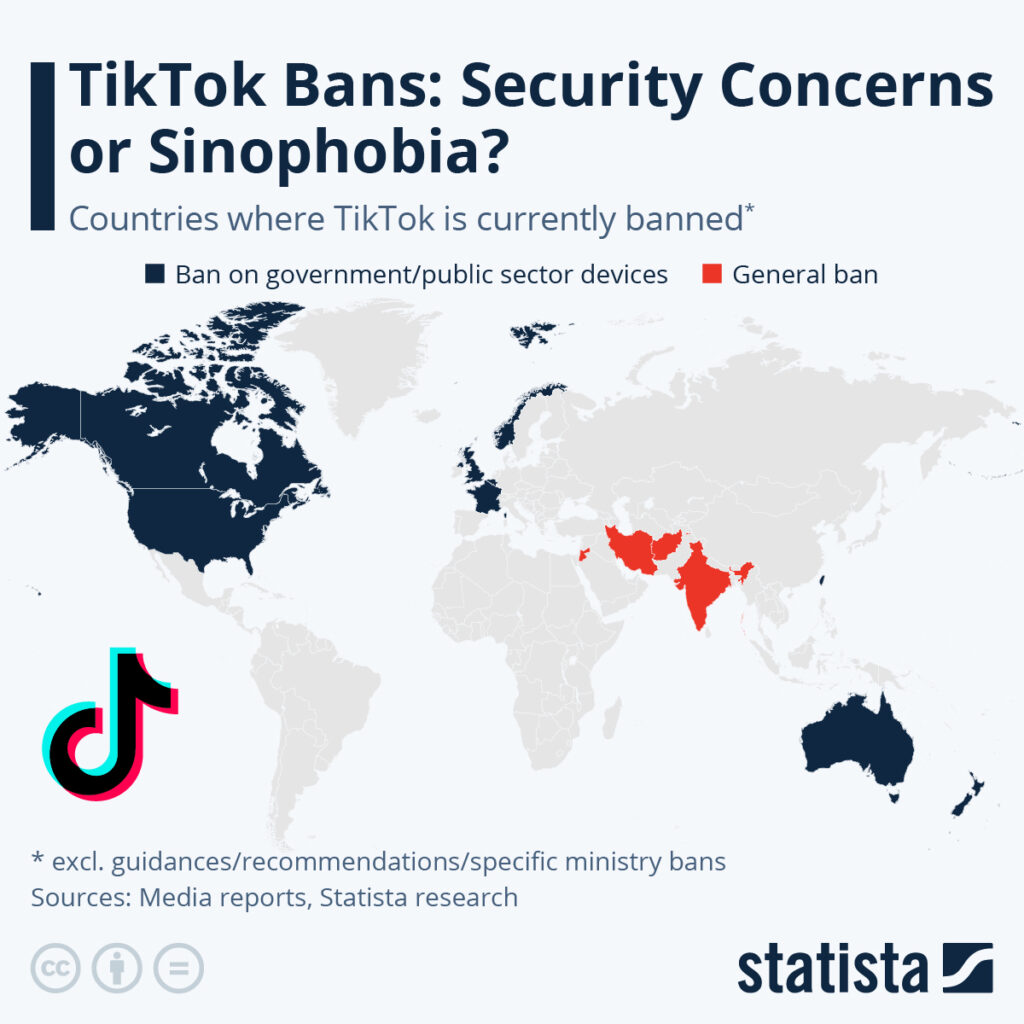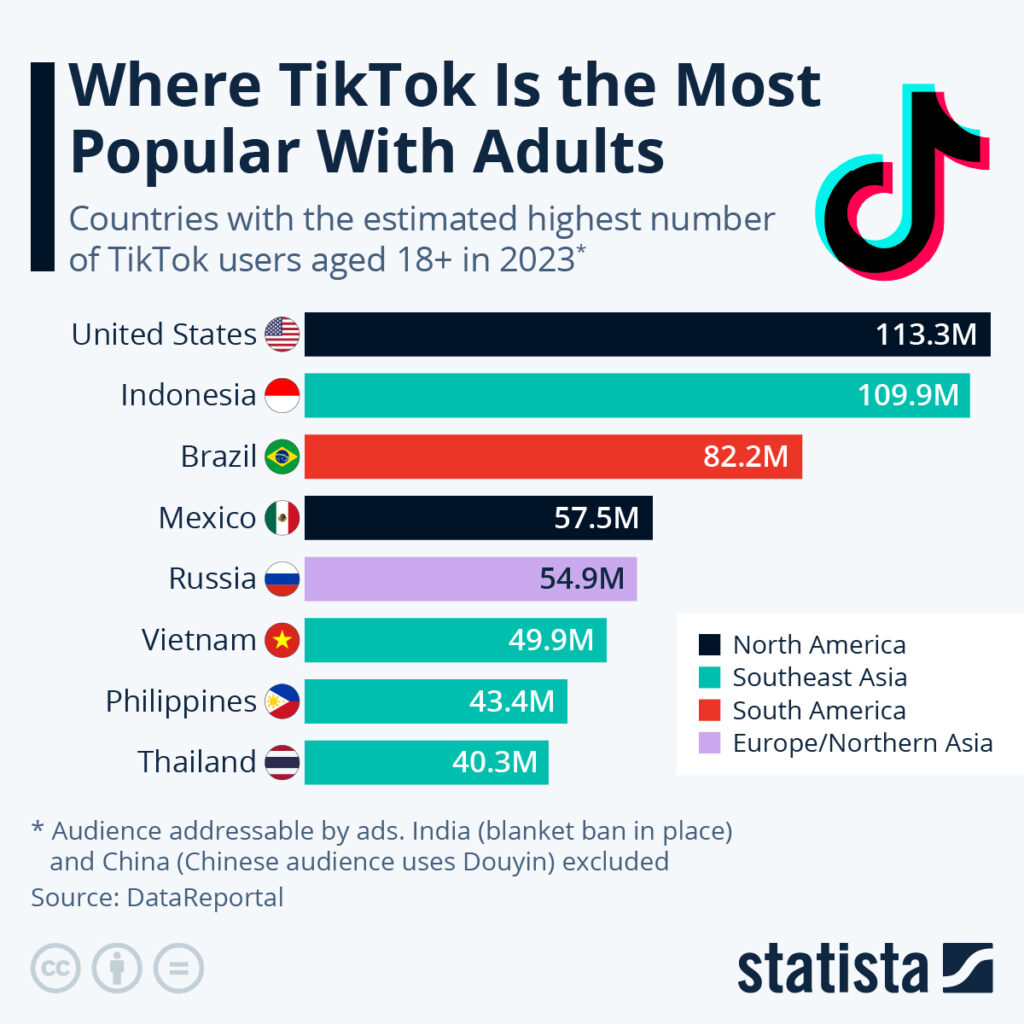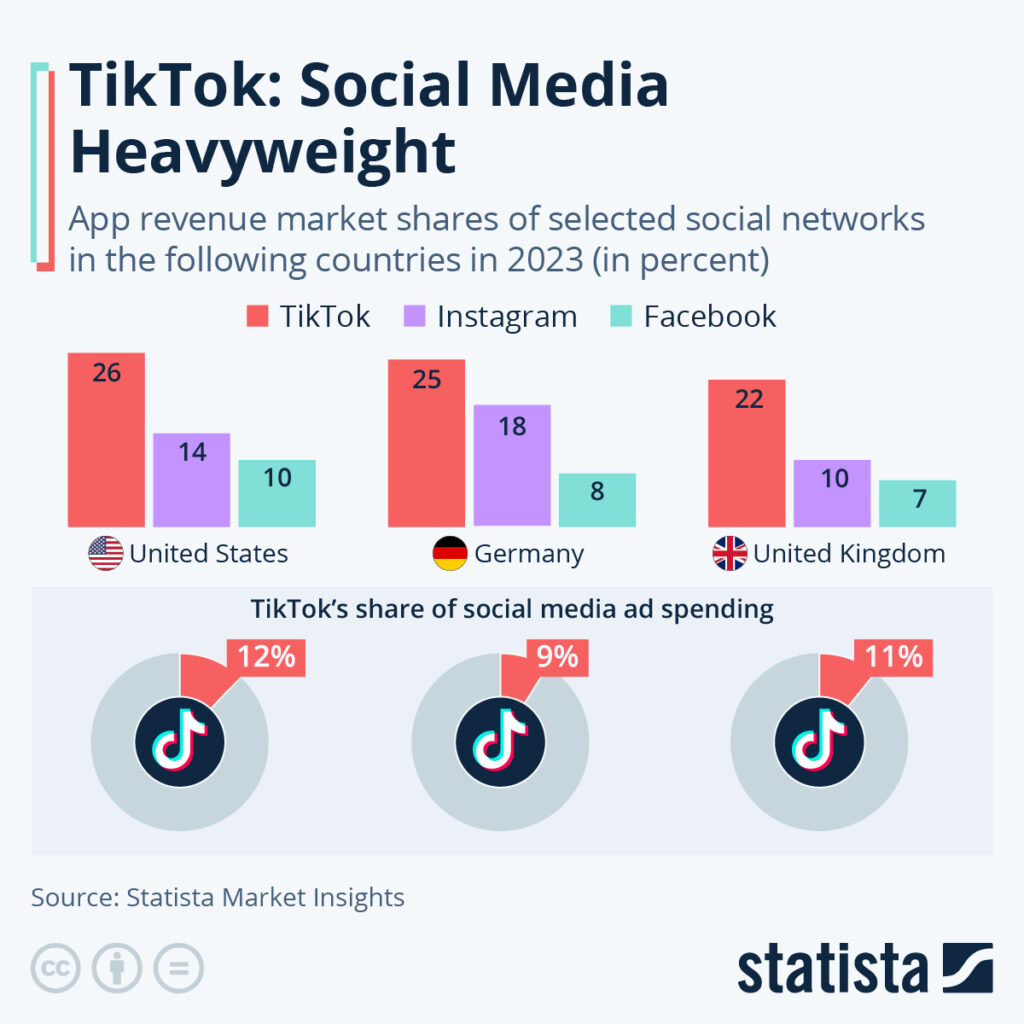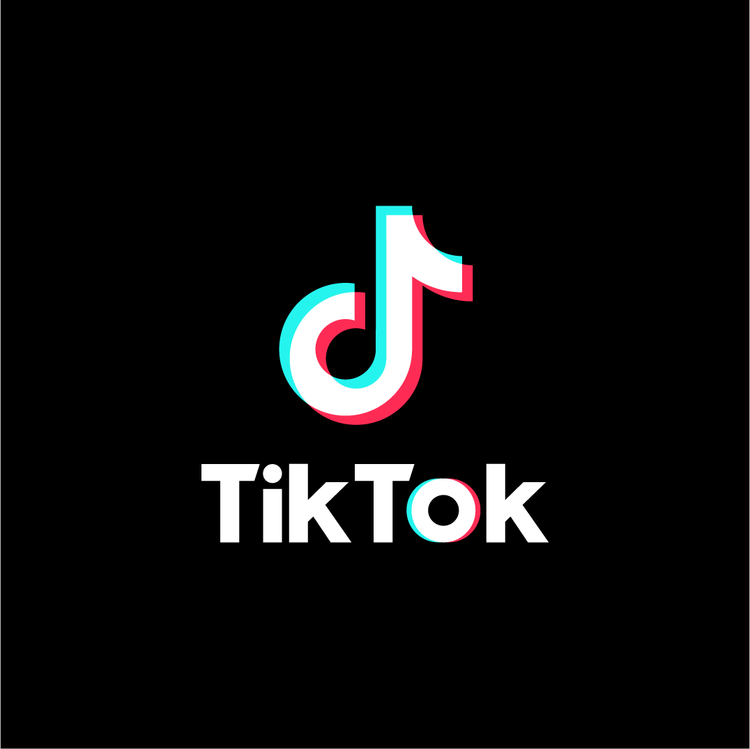On April 4, the Australian government decided to greenlight banning TikTok from all federal-owned devices like smartphones and tablets. The ban will be enforced “as soon as practicable,” according to Attorney-General Mark Dreyfus. Australia is the last country in the so-called Five Eyes, an alliance of the intelligence services of the United States, the United Kingdom, New Zealand, Australia, and Canada, to implement such a ban. As our chart shows, only five countries worldwide have put a blanket ban on TikTok, located almost exclusively in Asia.
The most notable example is India. In 2019, the country banned the short-form video app for some time, allegedly due to concerns about spreading content unsafe for minors. This ban proved temporary, but in June 2020, India’s Ministry of Electronics and Information Technology banned 59 Chinese apps, including TikTok, to curb the perceived spread of Chinese influence in the country. Other countries with general bans include Taliban-ruled Afghanistan, Iran, and Jordan. The latter plans to lift a temporary ban from December of 2022 instated in the aftermath of the death of a police officer at the hands of protesters at some point. Talks with TikTok’s parent company ByteDance haven’t yet led to a conclusive decision on the app’s future in the country.

In the eyes of some U.S. lawmakers, the United States should join the countries banning the app not only from government-owned but also from private devices soon. While officials claim that it’s unclear whether the Chinese government can extract and use data of Western TikTok users, which poses too big of a security risk, critics of the push for a blanket ban on TikTok argue that the motivations are either latent sinophobia or limiting China’s soft power in a new Cold War. The appearance of TikTok CEO Shou Zi Chew before Congress this past week did little to assuage the concerns of hardliners on this topic. Whether or not TikTok siphons off and, upon request, distributes more or less sensitive user data than its U.S. counterparts is unclear.
Where TikTok Is the Most Popular With Adults
On March 23, TikTok CEO Shou Zi Chew appeared before Congress to answer lawmakers’ questions surrounding the popular social media app’s connections to China and the potential risks of collected data being provided to the CCP. While some observers categorized the hearing as little more than individual representatives airing their personal grievances with TikTok, the impact and importance of the app in the United States can hardly be understated.
As a report from DataReportal shows, the U.S. had the biggest adult addressable ad audience out of all the countries analyzed, with advertising reaching around 113 million users aged 18 or older at the end of 2022. Looking at the ad audience numbers by region, Southeast Asia comes out on top with 272 million users, 200 million of which were reached in Indonesia, Vietnam and the Philippines alone. Important to note: These numbers only give perspective on the impact of the app. They do not represent all registered accounts since TikTok can be used by anyone older than 13, and the ad audience aged 18 and older may be smaller than the total number of adults on the service.
Interestingly, many of the world’s biggest economies are not included in the top 8, although the absences of China and India in particular are easily explained. China has a domestic version of the app called Douyin, which means Chinese residents are less likely to install the international variant of the app. The latter put out a ban on a slew of Chinese apps in the summer of 2020, including TikTok, to curb the alleged influence of the People’s Republic amid rising geopolitical tensions.
When it comes to the opinion of some European and U.S. legislators, India won’t be the only country with a blanket ban on the Chinese social media app in the future. The United States has already banned the app’s usage on work devices in some states and for many federal government workers, threatening a wholesale ban if TikTok isn’t split off from parent company ByteDance and rebuilt as a U.S.-based social media provider.
This would most likely not change its modus operandi, only who has access to the data of its users. Big tech companies like Meta or Alphabet operate on the same business model as the much-maligned TikTok, storing large quantities of sensitive user data and using it for advertising and other purposes. This is one of the chief reasons for critics of TikTok being under increased scrutiny by lawmakers labeling the recent proceedings as latently sinophobic and one of many symptoms of a new Cold War.

Social Media Heavyweight
The White House has endorsed a Senate bill that members unveiled Tuesday, which would give the U.S. government more far-reaching powers in restricting and even banning foreign-linked software or electronics producers. The draft law is considered to be aimed at Chinese-owned social media network TikTok, even though it doesn’t explicitly name the service. As CNN reports, the Restricting the Emergence of Security Threats that Risk Information and Communications Technology Act – RESTRICT for short – is being unveiled after two years of largely fruitless negotiations with TikTok to address U.S. national security concerns surrounding the app. Concern over how much of TikTok’s user data could be seen – and potentially weaponized – by the Chinese government has been heightening in the U.S. and Europe alike.
As seen in data by Statista Market Insights, TikTok has curated a large following in the United States and Europe, with its app revenue market share surpassing those of older social media networks like Instagram and Facebook – both U.S. owned. In the United States, TikTok’s share is already comprising 26 percent of the market, far ahead of Instagram’s 14 percent. However, advertisers have been sticking to longer-standing services. TikTok’s social media ad spending share in the U.S., as well as the UK and Germany, hovered between 9-12 percent, behind larger ad players Facebook, Instagram as well as professional networks Linkedin (i.e. equivalent Xing in the German market).

Source: Statista






